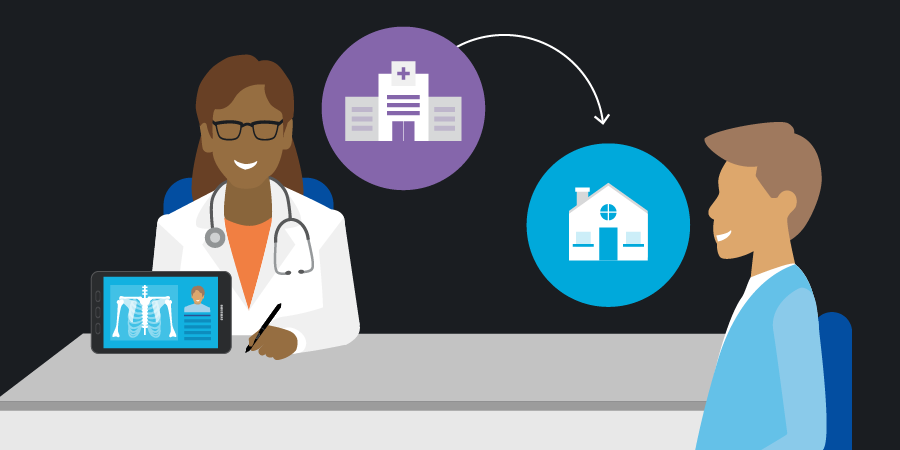Medical practices overflow with paper, so it’s no wonder staff, providers and even patients spend so much of their time dealing with it.
“No nurse, no clinician wants to do clerical work. They pursued careers in healthcare to deliver care, not push paper. Yet they’re spending 70 to 80 percent of their days doing just that,” says Kyle Platt, vice president of business development for Awake Technologies, which offers BestConsent, a digital check-in and e-forms solution used to improve medical practice workflow.
Entering the Paper Monsoon
Once a patient walks in the door, they are usually handed a clipboard with multiple forms attached. Knowing they have a limited amount of time to fill them out, patients often speed through, less concerned with accuracy than simply getting the forms completed. There are usually consent forms in the paper stack, but most patients fail to read them before signing. They hand back this documentation to the front desk staff, who may manually enter data or scan in the pages, as well as insurance and ID cards, and then attach copies to the patient’s record within their electronic health record (EHR) system.
Much of this happens minutes before the nurses and physicians see the patient, leaving no time to gain familiarity with the patient’s history or current concerns before they first meet in an exam room. This often leads to a frustrating experience for the patient, who has to repeat the exact information he or she just filled out on the paper form.
Once in the exam room, even more documentation takes place. Many physicians sit at desktop computers, staring at a screen where visit information is captured. Rather than connecting with the patient, the provider instead focuses on filling in blanks. The physician asks questions, but instead of focusing on the person seeking care, continues typing away.
Checking Out With More Forms
The paper push doesn’t end with the exam. The checkout process can be just as paper-heavy. The doctor may require condition information be printed out and handed to the patient. Any information that was missed during the intake process may be gathered at this stage. Specialist referrals, prescription forms and followup appointment schedules may also be printed for the patient’s reference.
How Mobile Solutions Improve Patient Experience
Get your free guide to enhancing the patient experience with mobile technology. Download Now
On top of all this, physicians need to manage concerns about securing protected health information (PHI) and the laws that regulate the confidentiality and security of patient data. Paper systems necessitate the physical storage of documents in safe and redundant ways. That may include the need for specialized shredding services. It’s doubtful any of the staff at medical practices dreamed their days would include so much focus on paper.
Mobility Simplifies and Improves Patient Engagement
Mobile technologies help address many of the paperwork and documentation challenges that impede medical practice workflows. Applications like BestConsent, which is browser-based and can be used on any mobile device with internet access, allow patients to fill out and even sign forms at home. Patients don’t feel rushed to complete paperwork. They can take their time to ensure information is accurate and thorough.
The purpose of consent forms can be explained and even paired with videos that make clear what a patient is consenting to. Then the patient can sign the document using legally compliant signature capture, enabled through the application. For patients who aren’t able to complete the consent forms in advance, a tablet can be provided at the registration desk to ensure all documentation is captured digitally.
More Time to Prepare
Being able to process these forms prior to patient arrival also gives clinicians more time to review the patient’s record, ensure their EHR system is updated, and allows physicians to be more prepared during the visit. Mobile tech also enables a more satisfying exam room experience for both the doctor and the patient.
Rather than staring at a desktop, the physician, with a tablet in hand, can face the patient. Says Platt, “Using mobile devices allows better face-to-face consultation. You can look patients in the eye, ask questions and have meaningful conversations.” Mobile devices like smartphones and tablets can enter into the care workflow nonintrusively, helping drive engagement between patients and care providers.
Once the exam is complete, the physician can activate Samsung DeX. DeX enables a Samsung smartphone or tablet to connect to an external screen, keyboard and mouse to deliver all the benefits of desktop computing. This connection creates a mobile-powered desktop experience, making it easier to complete the workflow that comes with managing medical practices.
Efficient Workflows Enable Better Patient Care
For BestConsent customers, switching to electronic intake and consent forms on average saves medical practices three to seven full-time employee hours per day. “Our customers take those time savings and repurpose them back into patient care,” says Platt. “By implementing mobile devices, electronic forms and electronic signatures, the barriers to medical practice workflow efficiency go away. Instead, you free up time for your staff to stay inside of the care delivery process.”
Discover more paperless workflow solutions to keep physicians more engaged with their patients than their documentation. Ready to take your hospital mobile-first? Find out how to get there with this free white paper.










